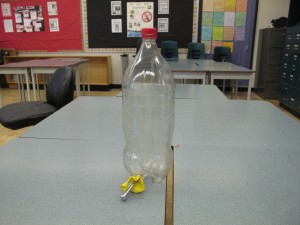(Philosophy Link: Curriculum should be proven relevant as much as possible)
Perhaps one of the most important things that I have discovered in order to make my curriculum content more appealing to students is the process of making the material matter. I found that when students knew the lesson topic was of importance or relevant with something they had heard about they instantly find it more interesting and worthwhile to learn about.
An example that I used during my teaching practicum involved a physical demonstration of how much tar is in exactly one cigarette. The demonstration allowed students to actually see and perceive what one cigarette can do to your lung by trapping some cigarette smoke in a two liter pop bottle (symbolizing a lung), then blowing back out the top of the bottle through a tissue to reveal a yellow ring of tar. The students watched the whole the process and then were told to pass the tissue around to have a good look at what was left from the smoke. The students were fascinated at what they were seeing, some making furthering their thinking immediately after the demonstration by asking what 100 cigarettes would look like.
Another example of relevancy being used in our class activity would include a class debate that we used to explore the processes of forming a political party in the Canadian Constitutional system. However, instead of debating over political issues while exploring the progressions of a debate, our class used issues that needed to be dealt with within our very school. Such topics of discussion included keeping old books in the library rather than replacing them with online texts, bathroom conditions, and even whether or not the school staff needed some revamping. Due to the relevancy of the material the student were highly involved and very determined to get their information across during the debate.
